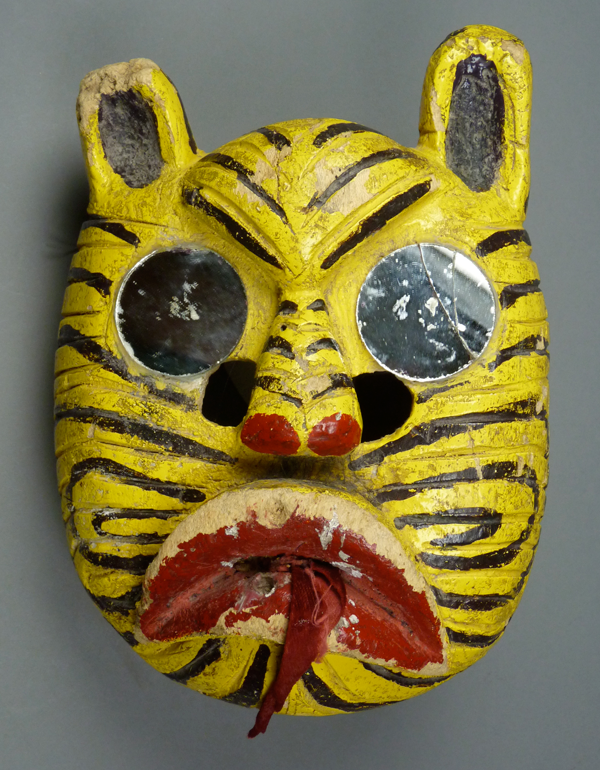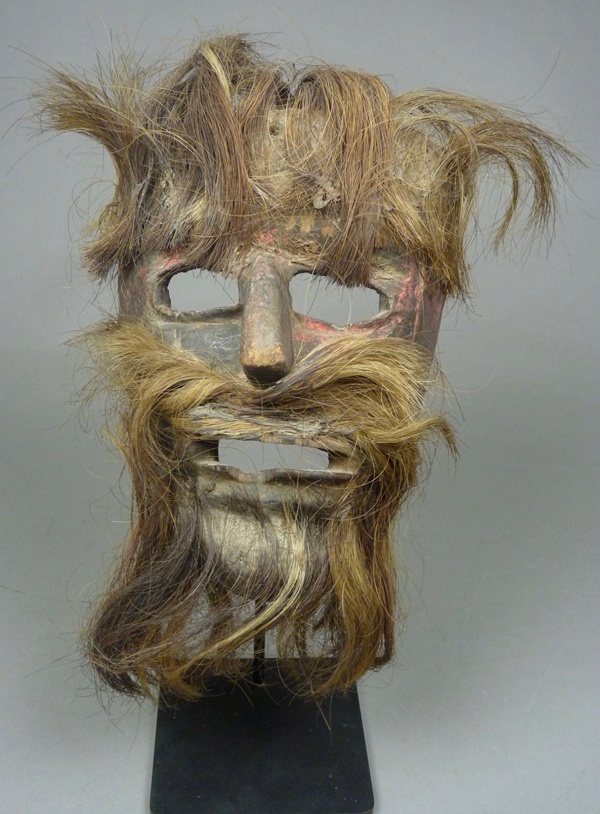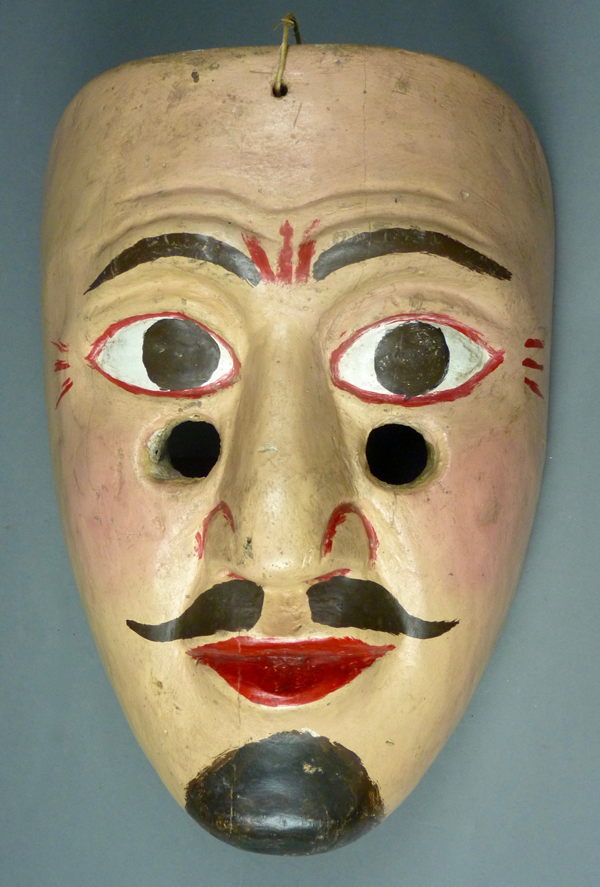In the Mexican state of Guerrero, there is a dance drama—los Tlacololeros—in which a group of farmers hunt a dangerous jaguar. Such dances are apparently ancient. We find an area of jaguar hunting performances along the Costa Chica, the “little coast” where Guerrero and Oaxaca meet the Pacific ocean, and extending to Chiapas and Guatemala. These dances occur in a series of contiguous Native American cultures, such as the Nahua, the Amuzgos, the Mixtecs, and a variety of Mayan cultures. The Tlacololeros dance survives in an area known as the Tlapaneca, which was traditionally occupied by the Tlapanec Indians. According to Danzas y bailes traditionales del estado de Guerrero (Mexico, 2005, pages 66-84), this dance presently persists in the following towns—Chilpancingo, Chichihuaco, Tixtla, Apango, Mochitlán, Zumpango, Tecoanapa, Ayutla, Zitlala, Chilapa, and others. You may already be aware of the considerable variation in mask styles between these many towns, and Tlacalolero masks, large and small, will illustrate this. Over the next few weeks I will show you some real beauties. Some nearby towns dance the Tecuanes dance instead; there is considerable overlap in terms of mask designs.
Here is a YouTube™video from Petaquillas, Guerrero, a town that is in the municipio of Chilpancingo; the two towns are just 6 miles apart. Some of the Tlacololeros have black human faced masks while others have red, white, or gray faces along with a standardized costume. There is a magnificent Tigre(jaguar) and a dog that looks like a very mean wolf. The human faced dancers portray a number of roles such as farmer-hunters and a Rastrero, or “tracker.”
https://www.youtube.com/watch?v=V4oW-DteitU&list=PLxDpP5Tg_rizP5Gq1y7vJCAc8d3Yc0mJE&index=9
In this next video, from Chichihualco, all of the masks are black. I include this one to share the accompanying text, which is interesting in its explanation that this dance appears to be a surviving form of an ancient supplication for rain.
https://www.youtube.com/watch?v=BI9Rx1wfh5E
Now here are some Tigre masks from these towns to get us started. I originally showed you these in October, 2014. The Tlacololeros pretend to hunt such jaguars. The first, carved from wood, is in the style of Tixtla.

Continue Reading →




